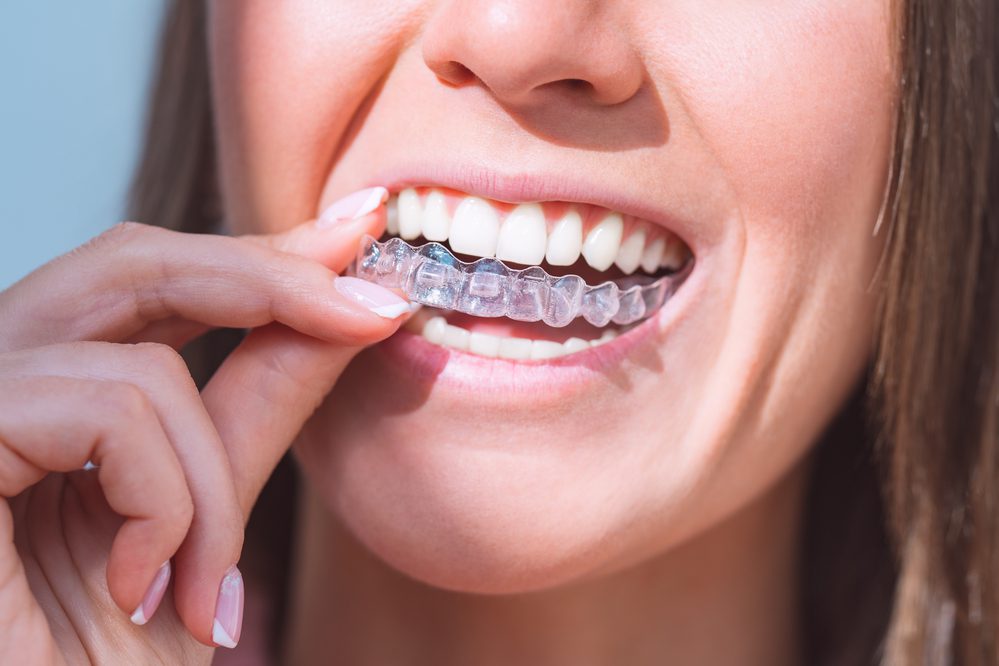
Clear aligners have gained popularity as a modern alternative to traditional braces for orthodontic treatment and straightening teeth.
But can they help with more complex bite issues like overbites and underbites?
In this article, we will explore how clear aligners work, how they can be used to correct overbites and underbites, and when they may not be the best solution.
Overbite and underbite are common orthodontic issues that affect the alignment of your upper and lower teeth.
A crossbite, on the other hand, occurs when the upper teeth bite inside the lower teeth.
These bite issues affect your oral health and can be caused by a combination of genetic and environmental factors, including skeletal issues, habits, and trauma to the jaw or teeth.
Addressing them early can help prevent more serious complications in the future.
Furthermore, these issues can affect one’s self-confidence and self-esteem, making it difficult to smile or speak in public. Addressing these bite problems early can prevent more serious complications and improve overall oral health.
 Clear aligners are removable plastic trays that gradually move your teeth into the desired position. Each aligner is custom-made to fit your teeth and is designed to apply gentle pressure on specific areas of your teeth to shift them into place.
Clear aligners are removable plastic trays that gradually move your teeth into the desired position. Each aligner is custom-made to fit your teeth and is designed to apply gentle pressure on specific areas of your teeth to shift them into place.
The process involves wearing a series of aligners for about 1-2 weeks each, with regular check-ups to monitor progress. Clear aligners are discreet, comfortable, and easy to remove for eating and brushing, making them an attractive option for many people.
Unlike braces with metal brackets, they are virtually invisible, making them a great option for those who want to correct their bite without drawing attention to themselves. They are also removable, allowing for easy eating, drinking, brushing, and flossing.
Clear aligners can be effective in fixing overbites, particularly mild to moderate ones. The treatment works by shifting the upper or lower teeth, depending on the direction needed:
However, more serious overbites might require additional treatment. If the overbite is caused by jaw misalignment, clear aligners alone may not be sufficient.
In these cases, an orthodontist may recommend combining aligners with other treatments like elastics or, in rare cases, traditional braces.
Similar to overbites, clear aligners can help treat mild and moderate underbites. The treatment process for underbites generally focuses on moving the lower teeth back or the upper teeth forward to achieve a better bite.
For less severe underbites, clear aligners can be a highly effective solution. They work by repositioning teeth in small, gradual steps.
However, for more complex underbite cases, clear aligners may need to be supplemented with other orthodontic tools or treatments, such as rubber bands or traditional braces.
There are several reasons why clear aligners are becoming a popular choice for treating bite problems:

While clear aligners can correct many bite problems, they are not suitable for every case. For severe overbites or underbites, aligners may not provide the necessary force to move the teeth or jaw adequately.
Other issues, like severe misalignment of the jaw, might require more intensive treatments like traditional braces or even jaw surgery. For very complex bite problems, an orthodontist will assess your case and may recommend additional or alternative treatments.
Clear aligners work best when teeth are relatively aligned but need adjustments. They may not be enough if the bite problems are more structural.
The length of treatment with clear aligners varies depending on the severity of the issue and how closely you follow the treatment plan. On average, treatment can take anywhere from 6 to 18 months.
Mild to moderate cases typically require less time, while more complex cases may take longer. Regular check-ins with your orthodontist will help track your progress and ensure that the treatment is moving along as expected.
Clear aligners can be an effective solution for correcting mild to moderate underbites and overbites. They offer a comfortable, discreet, and convenient way to address bite issues, but they may not be suitable for everyone.
If you’re wondering whether clear aligners are the right option for you, consult with an orthodontist. They can assess your situation and recommend the best treatment plan tailored to your needs.
If you’re dealing with an overbite or underbite, or other bite issues, Smilebliss is here to help. Our team of experts can guide you through your treatment options, including clear aligners, to find the best solution for your smile.
Contact us today to schedule a consultation and take the first step toward achieving a healthier, more aligned bite.